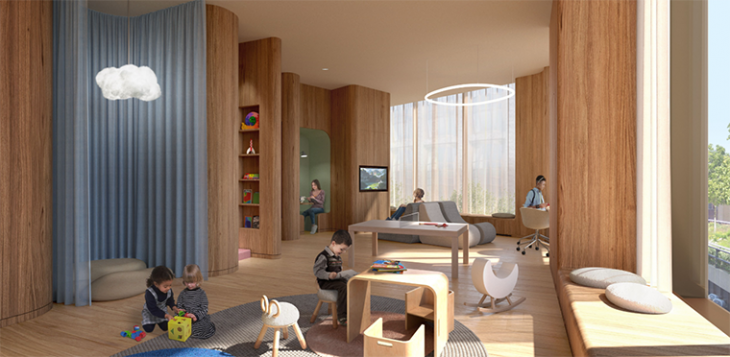
If you’ve never heard of the “psychology of space,” you might speculate that it’s how astronauts cope with the unfamiliarity of outer space. It’s perfectly natural to hazard such a wild guess if you’re neither an architect nor an interior designer.
Elizabeth Danze, an Architecture professor at the University of Texas’s Austin School of Architecture, believes that a beautiful office or building can set us free because it triggers our visceral response to space. Our environment strongly influences our thoughts, feelings, emotions, and moods.
A common thread, she says, that links psychoanalysis with architecture is that both can make us feel good. While a productive therapeutic session releases emotional baggage, an exquisite office frees up creative thinking and stimulates productive action.
Balancing Inner & Outer Space
Although it’s possible to have a well-designed office space in an old building, the architectural beauty of the building often influences the structure of its office spaces. An inspiring office usually blends itself into the architecture around it. Incorporating things like arches, tall ceilings, and large windows can be some of the most striking features of a renovated workspace. Many offices even hang vintage advertisements in new frames to give the workspace another blend of respect to the old tenants and interesting wall art to the new ones.
In fact, many other aspects of the interior of the building — the windows, doors, ceilings, floors, and staircases — will also enhance the psychological benefits of a well-planned office. Everything seamlessly integrates with everything else.

Illustrating the Concept
The Bjarke Ingels building a few blocks south of the Empire State Building called “29th & 5th” is an HFZ Capital project at 3 West 29th Street that brings to life the concept of the psychology of space.
In 2015, after Maryland-based Controlled Demolition, Inc. knocked down the old Bancroft Bank Building, Israeli-Canadian architect Moshe Safdie was tapped to design a residential tower on the site–until HFZ filed plans for an office skyscraper in September 2017. The New York real estate development and investment company envisioned a Bjarke Ingels-designed office gracing New York’s iconic skyline.
Specifically, the developers at HFZ imagined a new NoMad Office Tower rising 34 stories to a height of 551 feet and covering a sprawling 300,000 square feet. They pictured the eastern facade as a montage of glass curtain walls and open terraces for office workers to take a break, mingle with colleagues, and enjoy a magnificent view of the surrounding district.

Designing a Positive Space
The psychology of space is the interplay between the thoughts and feelings of human beings and their artificial environment. Achieving a positive space is both an art and a science: the art of simulating natural conditions that instinctively restore a person’s sense of well-being and the science of how to pull off this optical illusion.
A disarming interior space has to appear as close to nature as possible to make people instinctively feel safer and more positive. Accomplishing this trick is not a simple task: An interior designer has to find the best position for furniture and fittings, change the lighting to adapt to the time of the day, and direct attention to natural elements via fountains and potted plants.
In fact, there is a whole science of space as an element, with elaborate design principles on how to divide space out of space through the judicious use of colors, shapes, and geometry.
The Big Picture
After millions of years of exposure to nature, civilization has housed the vast majority of human beings in dreary buildings and interior spaces for thousands of years. This has had a dismal effect on the human psyche throughout recorded history. The science of the psychology of space, then, is an attempt to redress this issue. Architects and interior designs are innovating stunning new ways to design elegant spaces for human beings to flourish.



















